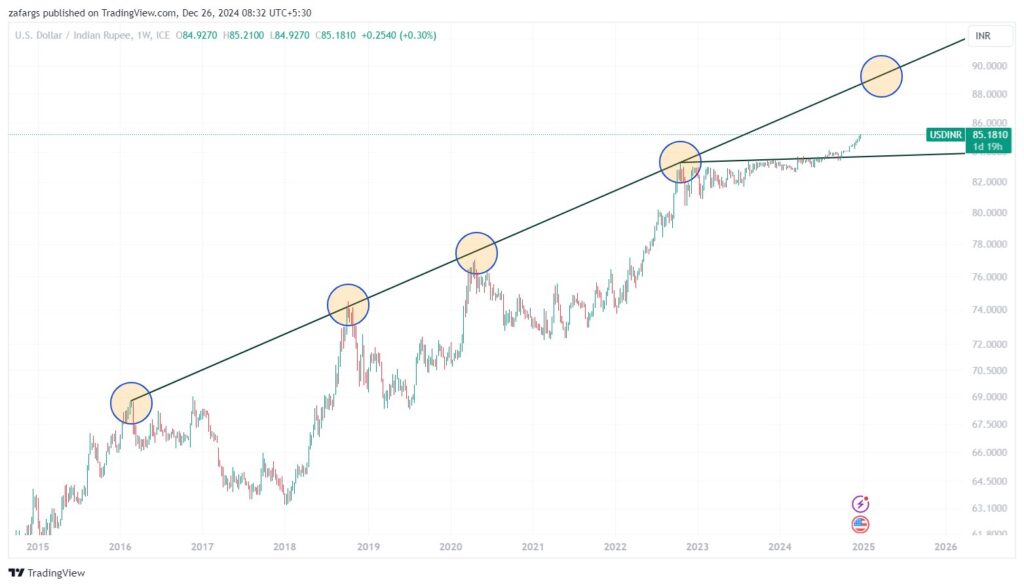
USD-INR Trendline: Insights from the Last Nine Years
The USD-INR exchange rate has followed an interesting trendline over the past nine years, often returning to a long-term resistance level. A recent analysis highlights significant interventions by the Reserve Bank of India (RBI) and potential future movements in the currency, offering valuable insights into what lies ahead for the rupee.

RBI’s Role in Stabilizing the Rupee
Over the last two years, the RBI has made substantial efforts to stabilize the rupee. It is estimated that nearly $65 billion in foreign currency reserves were utilized to prevent excessive depreciation. These interventions were aimed at controlling volatility and maintaining economic stability. However, with a new RBI governor now in place, the rupee appears to be finding its natural balance, suggesting reduced direct interventions in the future.
USD-INR CAGR and Historical Context
From 2016 to now, the compound annual growth rate (CAGR) of the USD-INR exchange rate has been around 2.3%. This is lower than the historical average, hinting at a possible catch-up phase in the coming months. As the dollar index strengthens due to global economic dynamics, including a push for a stronger US economy, the rupee may continue to face pressure.
Predictions for 2025
As of December 28, 2024, the USD-INR closed at approximately 85.5. This study showcases the possibility of UNDINR moving towards 89-90 in the first quarter of 2025. If this happens, it would realign the rupee with its historical trajectory, potentially aiding India’s export competitiveness. A weaker rupee could make Indian goods more attractive in international markets, offsetting some challenges posed by a strong dollar.
Global Context and the Dollar Index
The strengthening of the US dollar against global currencies adds another layer to the story. As the dollar index rises, most currencies, including the INR, tend to weaken. This dynamic, coupled with domestic and global economic policies, will play a crucial role in determining the future path of the rupee.
Impact on Exports and Competitiveness
A potential move towards the 89-90 range could benefit Indian exporters by making their products more competitive on the global stage. This aligns with India’s broader economic goals of boosting exports and maintaining a stable trade balance. However, it’s important to note that excessive depreciation could also increase import costs, impacting inflation and other economic factors.
WeekendInvesting launches – PortfolioMomentum Report
Momentum Score: See what percentage of your portfolio is in high vs. low momentum stocks, giving you a snapshot of its performance and health.
Weightage Skew: Discover if certain stocks are dominating your portfolio, affecting its performance and risk balance.
Why it matters
Weak momentum stocks can limit your gains, while high momentum stocks improve capital allocation, enhancing your chances of superior performance.
Disclaimers and disclosures : https://tinyurl.com/2763eyaz









